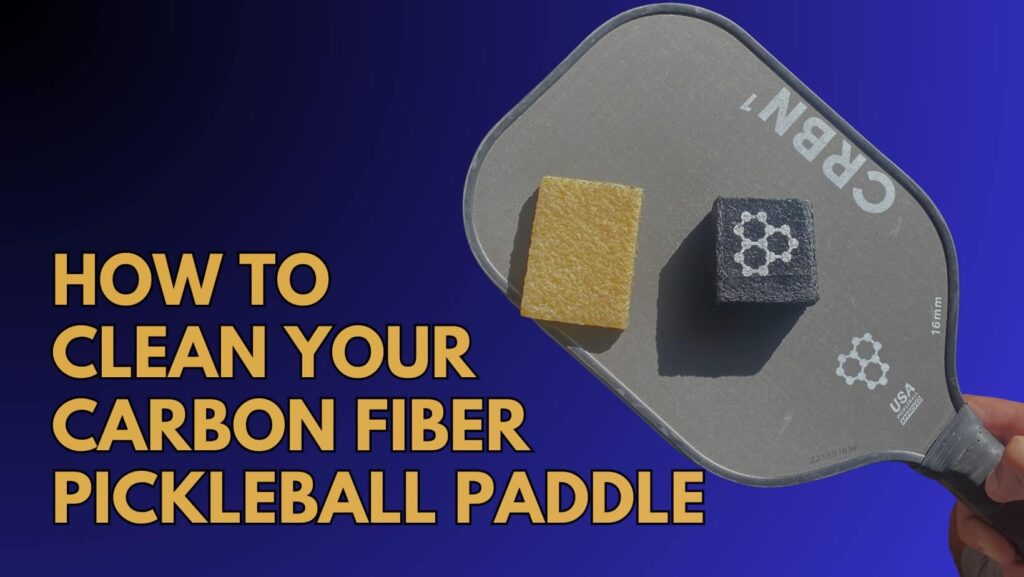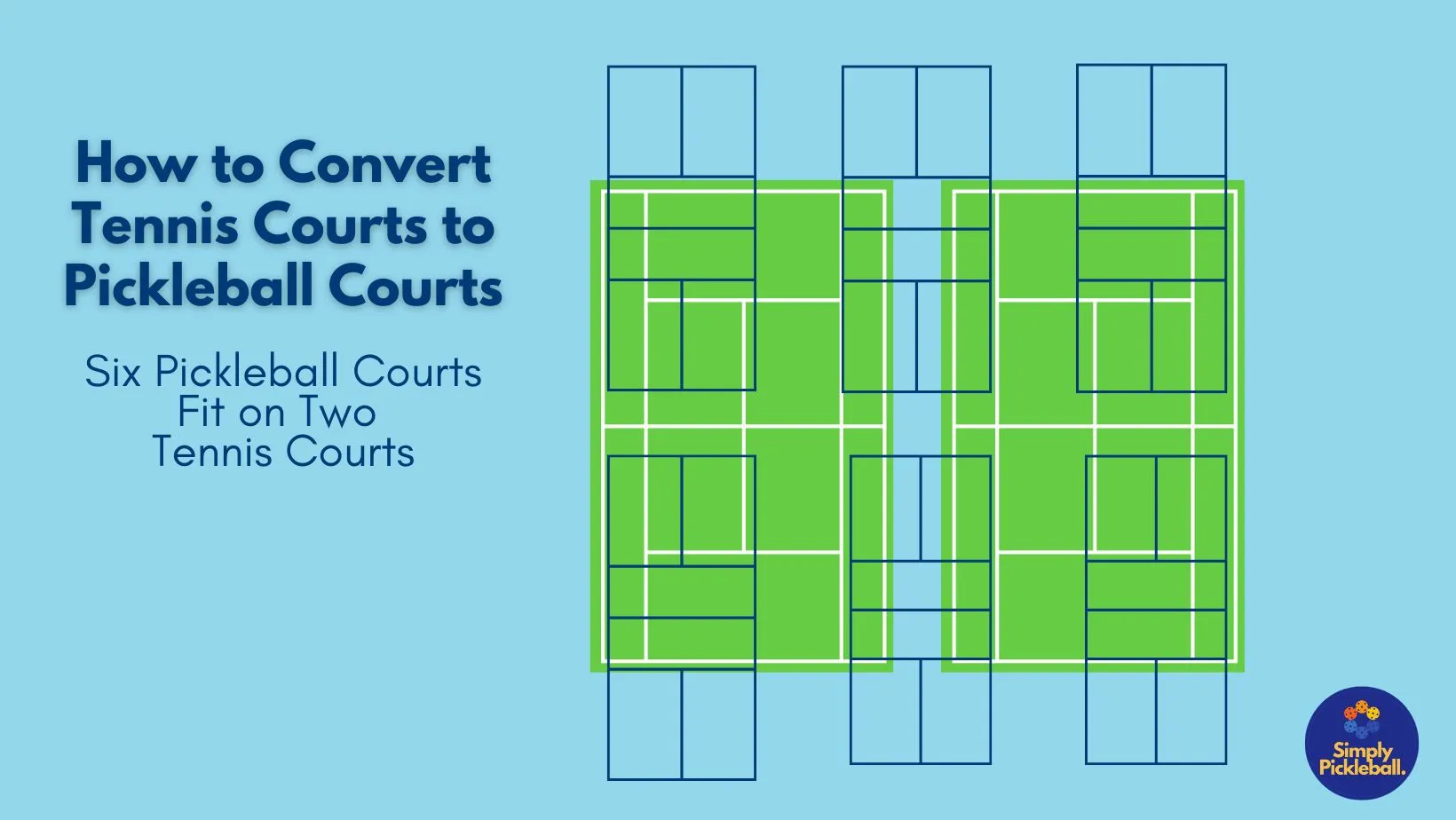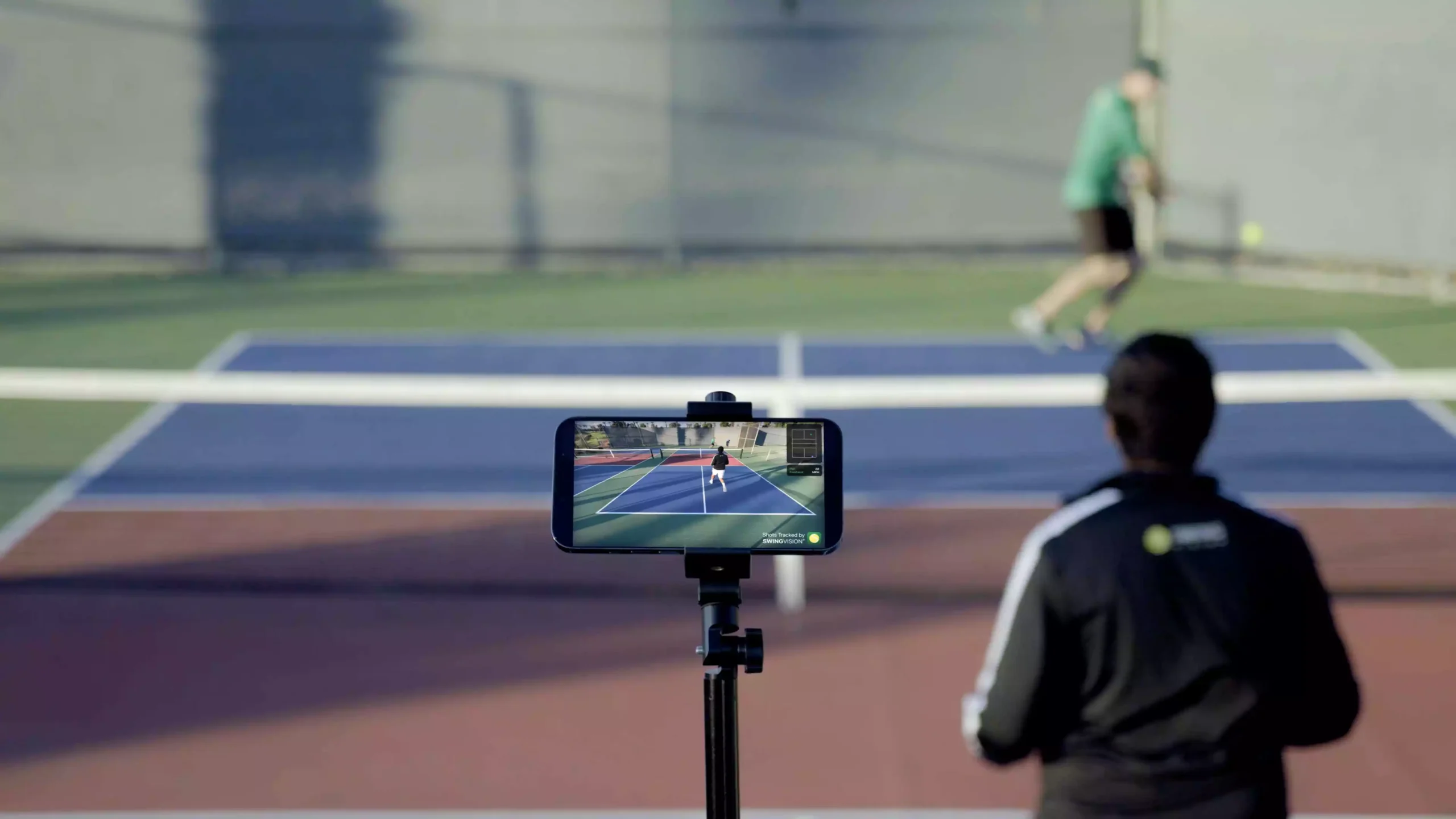How you clean and care for your pickleball paddle depends entirely on your type of paddle. Pickleball paddles are made from various materials, including wood, graphite, and carbon fiber. While Using a damp cloth is suitable for wood and graphite, it won’t help with how you clean your carbon fiber pickleball paddle.
Table of Contents
Importance of Cleaning Your Carbon Fiber Pickleball Paddle
Carbon fiber is a lightweight, stiff, and durable material composed of thin, strong crystalline filaments of carbon. Individual carbon fibers have a smaller diameter than a strand of hair. Carbon fibers are woven together to create a carbon fiber weave. This weave is what’s placed around the outside of a pickleball paddle.
The good news is that carbon fiber is durable and helps evenly absorb the impact of hitting a pickleball. The bad news (especially for raw carbon fiber paddles) is that it leaves exposed grooves that easily collect dirt and pickleball debris.
The grooves created by the carbon fiber weaves help create additional spin. If your paddle is dirty and the groves are clogged, the ball will have less spin. This means that it is essential to clean your carbon fiber pickleball paddle frequently. These grooves on the hitting surface are crucial for spin and control, making regular cleaning essential.
Does your carbon fiber pickleball paddle look like this?

Materials Needed for Cleaning Your Carbon Fiber Pickleball Paddle
Keeping your carbon fiber pickleball paddle clean is crucial for maintaining its performance and longevity. Over time, dirt, sweat, and ball debris can accumulate on the surface of your paddle, affecting its grip, control, and overall playability. Regular cleaning helps to remove these contaminants, allowing your paddle to perform at its best.
Different materials and methods are used to clean the various areas of your paddle. While most pickleball paddles can be cleaned with simple household items, carbon fiber paddles require specific care. A damp cloth will work well for the grip and edge guard (if you have one) but not for the paddle face itself.
A rubber eraser is the best tool to clean a carbon fiber pickleball paddle face. Below, we will go over several different rubber eraser options and a step-by-step guide on how to clean your paddle.
Additionally, cleaning your carbon fiber paddle helps to preserve its appearance. Carbon fiber paddles are known for their sleek and stylish design, and regular cleaning ensures they look their best. By taking care of your paddle, you’ll improve its performance and extend its lifespan.
How to Clean Your Carbon Fiber Pickleball Paddle
Step 1: Preparing your paddle for cleaning
Gather the necessary materials before you begin cleaning your carbon fiber pickleball paddle. Here’s what you’ll need:
- A rubber eraser: You can use either a “pickleball paddle eraser” or a “belt sander rubber eraser.” Here is our guide to help you decide (and save some money).
- Soft microfiber cloth: Choose a soft microfiber cloth that won’t scratch or damage the surface of your paddle. Microfiber is ideal for removing dirt and absorbing moisture without leaving lint behind.
- Warm water.
- Bucket or sink: Prepare a bucket or sink with warm water.
These items will help you clean your pickleball paddle effectively, ensuring it remains in top condition.
Step 2: Cleaning the surface of your pickleball paddle
Using a rubber eraser has made this step quick and painless. The rubber eraser is particularly effective on the textured hitting surface of a carbon fiber paddle, helping to clear out those performance-enhancing grooves.
Hold the paddle in one hand and the eraser in the other. Scrub the paddle from top to bottom, and you’ll see the dirt and ball residue quickly come off. Gently scrub to avoid damaging the carbon fiber material while ensuring a thorough clean. Very soon, your paddle will look like new. You’ll notice more bite if you rub your hand against the grooves. It has been proven in labs that using paddle erasers significantly improves spin.
The eraser method is especially good at removing sticky residue without damaging the carbon fiber surface.
Should you use a pickleball paddle eraser or belt sander rubber eraser?
Before, during, and after of using the CRBN Pickleball Paddle Eraser:
Before, during, and after pictures of using a belt sander cleaning eraser:
Recommendation: I’ve found that the CRBN paddle eraser and belt sander eraser produce similar results. And the belt sander eraser is a little easier to use. Since the CRBN is roughly double the price, I’d recommend the belt sander eraser and save money.
Step 3: Cleaning the edge and grip of your pickleball paddle
Cleaning the edges and grip of your carbon fiber pickleball paddle requires a delicate touch to avoid scratching or damaging the surface. Follow these steps for safe and effective cleaning:
- Dip the microfiber cloth into warm water. Ensure the cloth is damp but not soaking wet. Excess water can seep into the paddle and cause damage. Avoid getting any water on the carbon fiber surface of the paddle.
- Gently wipe the edge guard and grip.
- Carefully dry with a microfiber cloth.
Using a lint-free cloth ensures that no residues are left behind, which could affect the paddle’s grip and overall cleanliness. And don’t forget to clean around the paddle handle as well, where sweat and dirt can accumulate over time.
Note – Pay special attention to the paddle grip, as built-up sweat and oils can affect your hold and control during play.
Step 4: Drying and storing your paddle
- Once you’ve finished cleaning, use a dry part of the microfiber cloth to remove any excess moisture and debris. This will prevent water from seeping into the paddle and causing damage.
- Place your carbon fiber pickleball paddle in a protective case to prevent dust, dirt, or accidental damage. A case with a soft lining will provide additional protection and help maintain its pristine condition.
- Now that your carbon fiber pickleball paddle is clean, it’s essential to store it properly. Avoid storing your pickleball paddle in excess heat or cold. For example, Carbon fiber paddles have been known to delaminate if left in a sweltering car.
Additional Tips for Maintaining Your Carbon Fiber Pickleball Paddle
While cleaning your carbon fiber pickleball paddle, it’s important to avoid certain mistakes that could potentially damage the paddle. Here are some common mistakes to steer clear of:
- Using abrasive materials: Avoid using abrasive brushes, sponges, or cleaning agents that can scratch or damage the surface of your paddle. Stick to soft microfiber cloths and a rubber paddle eraser. This includes being cautious with household cleaners, which may contain chemicals that could damage the carbon fiber material.
- Applying excessive pressure: Carbon fiber paddles are sturdy, but applying excessive pressure during cleaning can lead to scratches or cracks. Always use gentle motions and avoid pressing too hard.
- Using excessive water: Carbon fiber can absorb water, so it’s crucial to avoid oversaturating your paddle. Use a damp cloth rather than a dripping wet one, and ensure you dry your paddle thoroughly after cleaning.
- Neglecting to dry the paddle properly: Leaving your paddle wet can lead to mold, warping, or other damage. Take the time to dry your paddle thoroughly before storing it.
By avoiding these mistakes, you’ll keep your carbon fiber pickleball paddle in excellent condition and enjoy optimal performance for as long as possible.
Pro Tip – Protect your paddle from extreme temperatures, which can cause the carbon fiber to warp or delaminate.
Pickleball Paddle Cleaning FAQs:
How to extend the life of your carbon fiber pickleball paddle
Wipe the ball off before play and occasionally during play. Pickleballs collect dirt, grit, and even a little sweat from all the hands touching them. There is a layer of gunk on them that you are pounding against your nice paddle, which then gets transferred to your paddle face.
Don’t play with your nice paddle when the courts are damp. The balls pick up dirt and debris, which you embed into your paddle whenever you hit the ball. If you have to play on damp courts, use your old paddle if you have one.
Don’t play with cracked balls. The sharp edges of the cracked sections can damage your paddle’s face as you strike them.
Consider not playing with balls that are overly used. You’ve seen balls that have knicks and chipped pieces of plastic. You can embed those pieces of plastic into your paddle face as you strike those balls.
How often should you clean your carbon fiber pickleball paddle?
One of the main benefits of carbon fiber paddles is the spin they produce. As soon as the grooves get clogged, you lose spin. I recommend cleaning your paddle often, as frequently as after every time you play.
What are the signs that my carbon fiber paddle needs replacement instead of cleaning?
The main issue with carbon fiber paddles is delamination. This is when the layers of carbon fiber become detached from the core. You’ll notice a significant loss of power and severe vibrations. Please contact your paddle manufacturer if this happens. Delamination is occurring less often these days as the manufacturing process has improved.
The other issue is that the carbon fibers will get pressed down and be less effective over time. You’ll notice a loss of spin, power, and dead spots. This is very typical after a few months of heavy use.
How long should a pickleball paddle last?
The short answer is that it depends. Carbon fiber, specifically raw carbon fiber paddles, have the shortest lifespan. If you play daily and hit the ball hard, your paddle may only last 3-4 months.
Paddles made from other materials can last a lot longer. I know some folks with paddles they’ve played with for over five years.
However, you can argue that the better paddles have a shorter lifespan. Paddle technology is evolving fast, and hopefully, we’ll soon have good options for long-lasting, high-quality pickleball paddles.
Conclusion: Enjoying Maximum Performance with a Clean Carbon Fiber Paddle
There is no question you gain an advantage when playing with a clean carbon fiber pickleball paddle. You maximize the spin and power that your paddle was designed for. The best part is that the materials needed cost less than $10 and only take a few minutes. Follow the tips mentioned above to increase your pickleball paddle’s lifespan. Good luck on the pickleball courts!
Join thousands of fellow pickleball players from around the world. Subscribe today!















